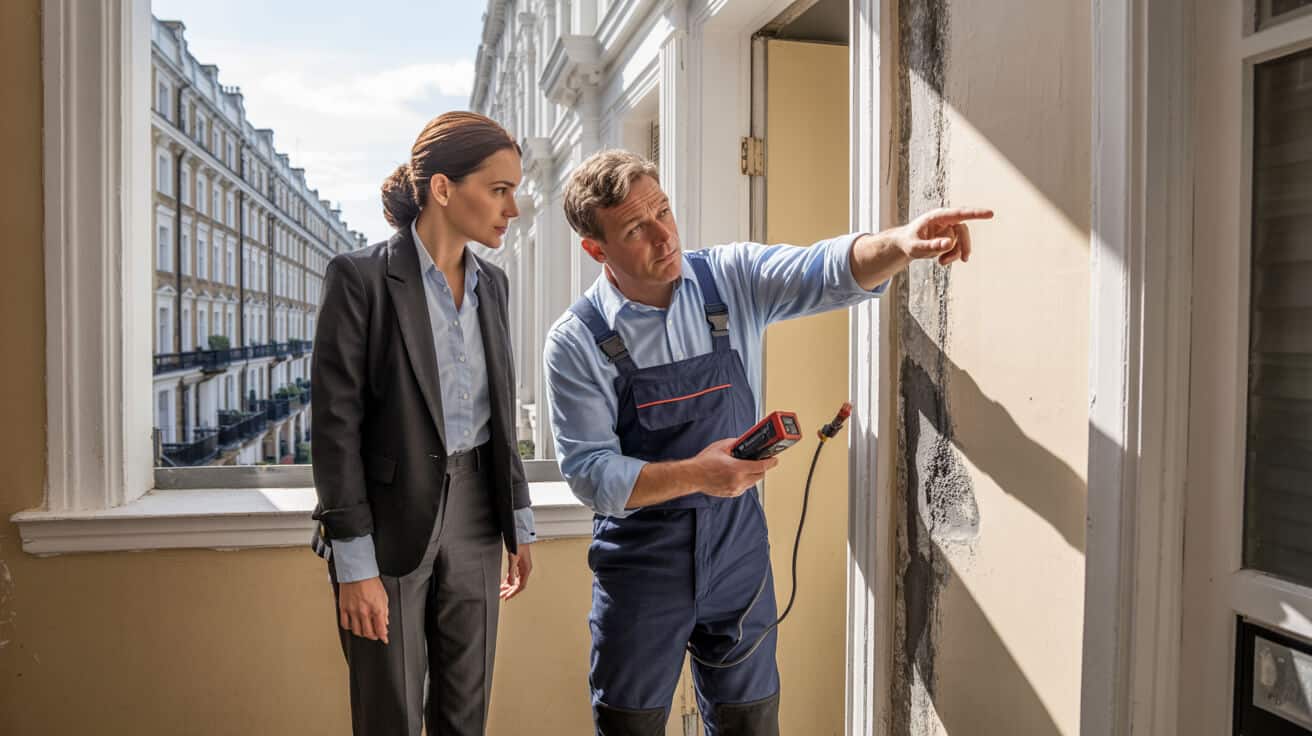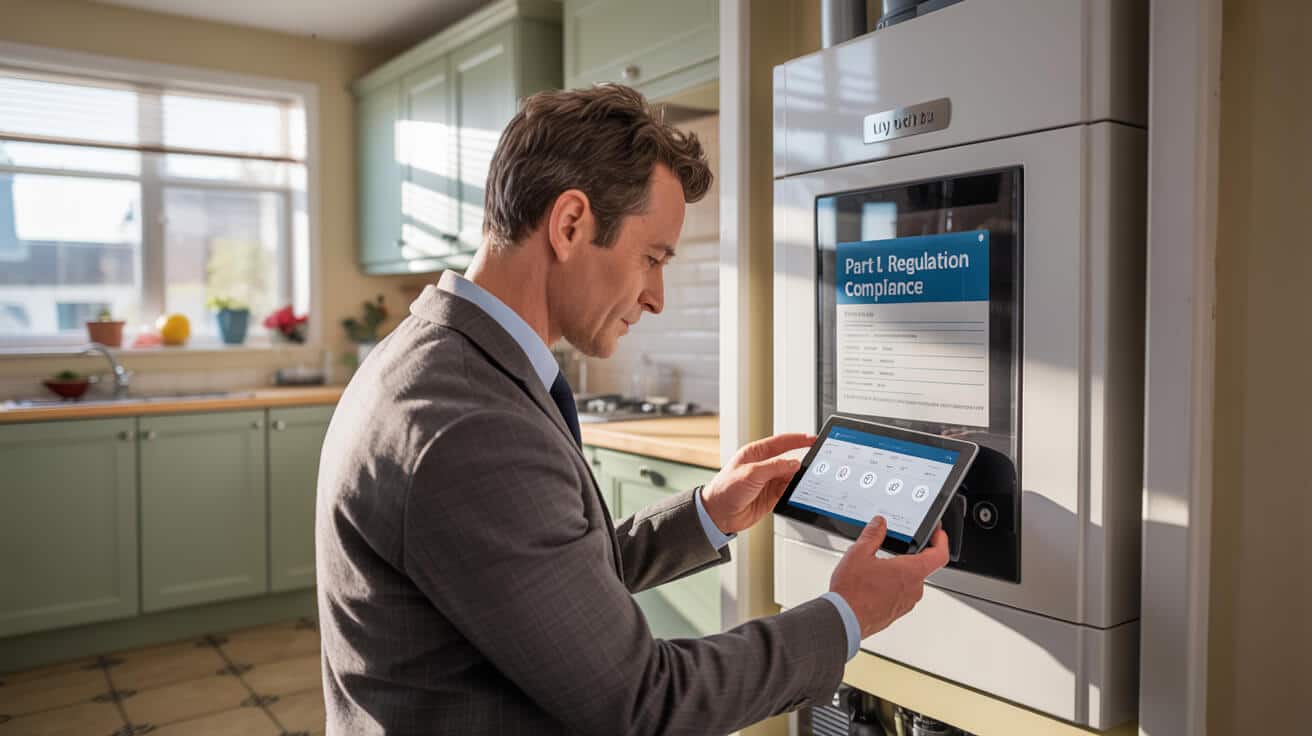 Complying With Part O Overheating Rules in 2025
Complying With Part O Overheating Rules in 2025

Are You Really Covered by the 2025 Part O Overheating Rules—or Just Hoping for the Best?
If you’re still treating overheating checks as an afterthought, you’re wide open to the most costly kind of project disruption. The new Part O rules aren’t limited to major housing schemes—they’re on the radar for anything that even hints at future residential use. That now means student apartments, care homes, office conversions, new flats—even many extensions and retrofits. Let that sink in: the definition of “in scope” is expanding as fast as the UK’s headlines about unlivable summer flats.
Overheating compliance isn’t an admin box—it’s the single factor that can hold up your completion certificate.
Building Control now expects every specifier, landlord, or project team to prove precisely how each property keeps occupants safe from excessive summer heat—by default, unless a clear exemption is documented. Forget the “it’s just a small extension” excuse. In 2025, the onus is on you to prove why your project escapes the rules, not the other way around. Fail here, and you risk delayed sign-off, mortgage holdups, or buyers losing confidence just when you need them most Atamate, 2024.
Letting this slip means you’re no longer just facing a paperwork headache—you’re rolling the dice with real time and money. Early, certified compliance is what lenders and agents are looking for first. Smart operators get Part O handled before it’s a risk.
Who Now Falls Under Part O’s Overheating Compliance Net?
- All new residential builds: Flats, houses, student blocks, care homes, etc.
- All conversions to residential: Offices, warehouses, industrial to flats.
- Mixed-use with any homes on site:
- Major extensions: that affect external walls or create “new dwellings”
You’re only out if you produce documented justification. Commercial-only and hotels are mostly out, but even then, an audit trail is demanded. That’s why agents and property managers are asking for complete, room-by-room compliance records—not just for initial handover, but again at resale or refinancing.
What Actually Proves Overheating Protection—Is Your Design Really Safe?

When push comes to shove, answering “is this flat or building safe from dangerous heat in July?” isn’t a vague design intent. You’ve got to demonstrate two things:
- You’re not turning rooms into glass ovens (solar gain is reduced for real, not just in CAD).
- Hot air has a viable, measured escape path (ventilation isn’t wishful thinking—it’s on actual spec).
You can’t fix 30°C bedrooms with a spreadsheet or a ‘best effort’ log. It’s physically built in or it isn’t.
Part O spells out glazing: max 21% glass-to-floor ratio for ground floors, and a tighter 16% for upper floors. Ignore this, and you’ll be forced into expensive Dynamic Thermal Modelling (TM59 or PHPP) that eats budget and time Everest, 2024.
There’s also ventilation math now enforced—either your rooms cross-vent naturally (windows on opposite walls, sized right), or you log compliance with minimum openable area (1/20th of floor area is a common figure, per habitable room). “Looks about right” doesn’t cut it—Building Control wants proof, not guesswork.
If you can’t hit those figures (awkward plot, no roof eaves, north-facing street), grab a thermal modeller early. Night-before sign-off fixes aren’t a thing; last-ditch changes will hammer your profit margin.
What Happens When You Can’t Meet the Standard Window or Vent Ratios?
This is where projects go off the rails. Urban infill, heavy glazing, oddball layouts—if you can’t meet the “simplified” ratios, you’re down the only legal route left: full Dynamic Thermal Modelling (DTM). You’ll need to appoint an accredited modeller (TM59/PHPP), and you must provide full window, vent, and shading data for their simulation. Get this input wrong, and you’ll loop back through redesign costs, timeline slips, and explanations to the bank.
Shortcut or Full Simulation: Which Compliance Route Actually Saves You?

Before you burn weeks chasing a “DIY tick-box” win, step back. There’s a simple philtre:
- If every room fits inside the Part O max window and min vent numbers: , use the Simplified Route.
- Fast, usually low cost. Log ratios, fill the forms, keep proof for Building Control and client O&M records.
- If any part fails (room-by-room, not just “on average”): , you need Dynamic Thermal Modelling.
- Get a specialist in at design stage, not post-fit-out. The certificate needs live build data—late changes mean paying twice.
The only thing slower than DTM is waiting to commission it till after you’re onsite and bleeding cash.
| Compliance Route | Timeline Impact | Cost Uplift | When to Use |
|---|---|---|---|
| Simplified | Fastest | Low | Standard layouts, typical glass-vent ratios |
| DTM (TM59/PHPP) | Slow (2-6 wks) | Medium-High | Complex sites, conversions, “feature” façades |
Miss just one room’s ratio, and your completion can go from weeks to months behind.
Top teams test compliance pathways at pre-tender, so there’s no panic at Building Control review.
Can Your Glass, Shading, and Building Materials Hold Up When Scrutinised?

The most common trap? Only documenting intent (“this window will be shaded!”) instead of as-built fact. Part O is about installed performance: physical glass ratios, BBA-certified shading, and actual vent measurements logged room by room.
South and west façades with high glass are the most likely to fail; Building Control will want BBA/BR443 evidence on optical performance, not marketing speak from the supplier LABC, 2024.
A missing certificate on one louvre or incorrect glass spec can freeze sign-off and expose you to late costs.
Be ready with:
- Full manuals and product certifications for shading and vents.
- Room-by-room post-instal checklists plus digital photos (timestamped).
- Supplier warranties and performance test printouts.
This documentation isn’t just about getting sign-off; it’s the first thing checked when you come to sell, refinance, or settle disputes. Skip it, and you’ll spend that time re-explaining your build to lenders, agents, and future buyers SolarShading, 2024.
Will Your Ventilation Audit Stand Up—Or Are You Relying on Assumptions?

Cross-ventilation (windows or vents on two different façades) remains your fastest Part O path—but only if you can document it. Every habitable room, not just the main ones, needs an engineered airflow number and recording Architecture Today, 2024.
Control teams and underwriters now prioritise real-life airflow logs over promises made at early design stages.
If you can’t do cross-ventilated layouts (tight urban plots, block layouts, etc.), mechanical systems (MVHR/MEV) are the fallback. But that means:
- Per-room commissioning sheets.
- Digital copies of system settings and instructions.
- Signed-off mechanical warranties.
Ignore hot pipework or fail to lag tanks, and you’ll get flagged at sign-off—thermal losses from pipes and cylinders can tip rooms over the temp limit. WRAS compliance isn’t just water safety—it’s now an overheating check WRAS, 2024.
What Documentation Do You Need—And Is It Bulletproof for Handover and Sale?

We’re past the days of one-page summaries. You now need room-by-room digital and physical packs: ratio logs, vent specs, shading certs, O&M instructions, and full mechanical commissioning evidence.
O&M failures nearly always trace back to missing buyer-facing ventilation or cooling guides Homebuilding, 2024). Build these from day one. Buyers and agents want these up front—any missing records can freeze a sale, loan, or remortgage NHBC, 2024.
A digital handover pack with compliance records is the new gold standard—any less is risky business.
Have your paperwork ready before you need it:
- Glass and vent logs signed per room/zone.
- Evidence (photos, certificates) for all installed shading and ventilation.
- O&M manuals with warranty docs.
- Mechanical schedules and digital commissioning data.
- Buyer-friendly quick-start guides for climate control.
Owning the documentation process gives you leverage—no log, no handover.
When Issues Hit at Final Inspection—What’s the Fast, Documented Recovery Route?

Don’t panic if you’re flagged late. But do act systematically:
- Open more vents or upgrade openings: (with photographic and measurement proof).
- Add certified external shading: —check installation aligns with BBA cert.
- Upgrade pipe/tank insulation: —log before/after, so you can evidence the change.
Notably, every fix must be documented with photos and certificates, or Building Control can reject the result Housebuilder, 2024.
A slapdash fix with no paperwork can burn £10-20k per flat in last-minute delay costs.
If practical fixes aren’t enough (heritage street, tight window layout, etc.), go straight to Dynamic Thermal Modelling. Commission the certificate asap, have the modellers file directly, and put the compliance cert in your handover pack for lender and buyer Passivhaus Trust, 2024).
Why Bringing in a Certified Audit Team Early Removes the Guesswork

Skip the last-minute scramble by getting your project audited by G3/WRAS-certified professionals, like Plumbers 4U, before you’re staring at a looming handover deadline.
Your audit team will:
- Independently review glazing numbers, vent specs, and all compiled pack evidence.
- Spot gaps early in venting, pipework lagging, or documentation—while you can still act without crisis costs.
- Build a compliance pack that auto-converts O&M handover into Building Control and lender sign-off, with minimal questions.
Third-party review isn’t a formality—it’s a profit-preserver for every property professional.
With Plumbers 4U, you get digital and print packs, gap checks, and risk warnings in advance. Both direct and DTM paths are supported, with ongoing support for late-stage buyer or tenant queries Plumbers 4U, 2024).
It’s not just peace of mind—it’s about keeping your business and project schedule friction-free in a market where reputation means everything.
Ready to Remove the Overheating Risk? Book Your Part O Review Today
If you’re betting your completion date (or your buyer’s confidence) on hastily assembled notes or a handshake agreement, you’re setting yourself up to lose.
With Plumbers 4U’s G3 and WRAS-certified engineers, you’re unlocking:
- Fixed-scope, transparent price audits—no extras or ambiguous timelines:
- Room-by-room digital and field-photo evidence for every compliance item:
- O&M-ready, buyer-friendly checklists and support:
- 10% discount if we don’t deliver before your agreed handover date:
- More than 1,000 Part O sign-offs last year—from home extensions to portfolio developments:
Early audit is your shield—you’ll never lose a sale to missing paperwork again.
Book your certified review with Plumbers 4U today, and step into your next property milestone with confidence. Compliance is no longer a gamble. It’s your edge.
Frequently Asked Questions
Why does Part O compliance directly impact your property’s financial, legal, and future-proof status after 2025?
From 2025, Part O isn’t just a regulatory hurdle—it’s the main gatekeeper to your capital, reputation, and operational freedom across the UK property sector. Banks, insurers, and local authorities will enforce rigorous documentation before you see funds released, tenants moved in, or any new tenancy or refinancing. Missing or incomplete evidence now freezes mortgages, stalls remortgages, triggers null sales, or leads to hefty voids. According to updated RICS analysis, one in five apartment re-sales in London faced significant delays or value drops from unresolved overheating compliance or missing ventilation records (RICS, 2024).
You don’t just build value—you prove it, room by room, document by document.
Landlords and asset managers who rely on a patchwork of post-hoc compliance checks put every transaction at risk. For letting agents, opaque or outdated compliance logs mean rental onboarding stalls or gets red-flagged in legal packs, costing weeks if not months. Even minor slipups—like unfixed ‘minor’ window log gaps or missing shading certificates—can cause lenders to halt drawdowns, buyers to back out, or warranty providers to deny claims.
How are asset-holders shifting their strategy in the face of tougher audits?
- Pre-emptive digital file packs, updated from design through handover, not “built after the fact.”
- Third-party certified compliance audits carried out before plaster is dry, not just at Building Control sign-off.
- Mandating reliable, WRAS-approved partners (such as Plumbers 4U) for room-by-room evidence, logged and retrievable for future triggers.
Landlords and agents who take compliance seriously aren’t just avoiding fines—they’re ensuring every pound of property builds and holds value in a market where documentation is your reputation. Protect your portfolio by making iron-clad Part O records as non-negotiable as a clean title.
Which practical actions and design choices virtually guarantee first-time Part O sign-off—regardless of project complexity?
The new “zero-tolerance” audit environment means that every compliance step must be visible, verifiable, and staged—no more scrambling for missing vent logs at handover. Schemes that rely on retroactive fixes or “almost-compliant” solutions suffer months of delay, lender mistrust, and asset value erosion.
If your compliance pack isn’t ready before Building Control arrives, you’re not getting the keys. Every fix starts on paper, but matters most on-site.
What explicit steps put first-time approval within reach?
- Measure and submit actual, as-built glass area per room; ensure ratios remain below the 16–21% threshold after all site changes.
- Specify cross-ventilation routes for every habitable room—for single-aspect homes, log mechanical solutions (like MVHR) with photographic proof and commissioning sheets, not just designer intent.
- Fast-track external, certified shading installation and provide the manufacturer’s certificate—not just “solar glass” stickers.
- Require all heating and hot water pipes within habitable rooms to be fully insulated (Part L overlap matters here); photograph and record each run. This simple step now routinely decides sign-off.
- Collate every product registration, commissioning log, and manufacturer sheet into a digital, time-stamped compliance bundle.
Which “insurance” practices are pushing up approval odds and speed?
- Instal solar-control window film or external blinds plus obtain engineering signoff where fixed shading is unfeasible.
- Schedule a third-party compliance check with Plumbers 4U or a similar WRAS/G3 partner to spot documentation errors before inspection day—cutting fail rates to near zero.
- Set up an online portal early—both for your team and external stakeholders to upload logs as work proceeds, removing the risk of lost paperwork.
Owners and managers that build these routines into every project now finish jobs ready to monetise, refinance, or resell on their own timeline—not the auditors’.
What typical failures create Part O non-compliance, and how do you keep control across all project teams?
Compliance breakdowns aren’t born out of bad will; they come from split responsibilities, late design swaps, and siloed documentation. Time and again, site teams “forget” to update vent schedules after a window change, substitute unapproved shading in a rush, or lose track of signatures as email chains stretch and temp staff rotate.
Miss a log, mis-timestamp a fix, and your whole deal can stall. Control is a full-project discipline, not a final-day checklist.
Where do most failures and delays originate?
- Window/vent lists that are never updated when plans change between procurement and instal
- Site teams “eyeballing” vent sizes, relying on assumptions, or failing to fill out measurement logs
- Shading or glass upgrades swapped at instal, but manufacturer paperwork not submitted
- Insulation left off pipe runs where it’s “hard to reach,” never recorded, and missed by inspectors
- All the documentation scattered—some with contractors, some with main office, some in supervisors’ WhatsApp threads—so nothing is truly auditable
Best-in-class methods to lock in compliance discipline:
- Put a single person or team in charge of a master compliance pack—the only route for every log, photo, and certificate
- Require signed, dated logs from the installer at every handover—not just a “fit and forget” mark
- Run spot audits two to three times during the project—catch omissions before handover, not after
- Incentivise fast, full evidence—tie retentions or bonuses to timely, complete documentation, not just job finish
Smart property teams don’t just finish on time—they finish with a file in hand that clears every audit and primes every sale, remortgage, or letting for success.
How do ventilation routes, certified shading, and modern controls combine to actually pass Part O’s toughest assessments?
Satisfying Part O is about more than “meeting the letter” of the spec. It’s the interaction between openable glazing, ventilation (natural and mechanical), and solar gain controls—each feeding into, and often multiplying, the risk or security of the others.
What does “joined-up” compliance look like in practice?
- Glass area is your “risk lever”—the more glass, the stronger your shading and ventilation strategy must be.
- Direct cross-ventilation wins every time for Part O, but only when open areas are physically measured and logged—“we planned for it” isn’t evidence.
- Mechanical extract or MVHR? Has to be actually working—and signed off with a commissioning sheet showing summer boost setting, not just “left on defaults.”
- Every window or vent must be installed as specified, not swapped—Building Control now tracks evidence line by line.
- Tenants or residents are now given a control guide at handover; some authorities require visible “how-to’s” near vents or controls.
Miss any link in this chain, and you’re facing dynamic modelling, extra months, and thousands in fees.
Table: How layered compliance works, room by room
| Area | Openable Area Confirmed | Certified Shading Installed | Mechanical Boost Commissioned |
|---|---|---|---|
| Living Room | ✅ | ✅ | ✅ |
| Bedroom 1 | ✅ | ❌ | ✅ |
| Bedroom 2 | ✅ | ✅ | ❌ |
Gaps demand extra audits, more expense, or property red flags. Full compliance means every room, every record, every ticking box. Landlords and agents who go beyond “bare accepted minimum” lock in sale and letting velocity if/when regulations tighten further.
What are the economic, ESG, and reputational rewards of proactive Part O compliance?
Forward-leaning Part O strategies transform compliance from regulatory cost to income driver, opening doors to better financing, lower voids, higher rents, and powerful market differentiation via ESG and “green” audit credentials.
Investors and buyers are tracking compliance scores and ESG readiness as core value—they’re not waiting for the regulators to catch up.
Why does compliance cut risk and drive profit?
- Major lenders now demand evidence of Part O, green rating, and digital audit trails before advancing or refinancing loans—fail, and drawdowns go on hold
- Properties with fully-documented, certified audit packs flip faster for sales, attracting buyers, tenants, and grant-eligible “green” upgrades
- Institutional and large landlords see portfolio-wide cost reduction, as audit defence means fewer delays and ongoing premium savings
- letting agents who deliver heat-protected, certified accommodation cut voids, court claims, and boost tenant retention
- Modern ESG metrics reward landlords for transparent and retrievable data—raising reporting scores that drive public and investor trust
Professional reputation in the 2025 landscape starts with documentation. Owners who pass audits at the first go and provide retrievable evidence are trusted above all—by banks, buyers, insurers, and their own tenants.
How does choosing Plumbers 4U as your WRAS-certified compliance partner keep your assets and deals safe?
Plumbers 4U stands out with a hands-on, audit-first approach, WRAS certification, and G3-trained teams who know the risks (and opportunities) in every vent, glass, and pipe. Compliance partners aren’t just sign-off helpers—they unlock your funding, safe tenancy, and future flexibility.
A great compliance partner is the silent asset in your portfolio—delivering certainty long after construction dust has settled.
What unique advantages does Plumbers 4U deliver?
- Room-by-room, on-site validation: Every vent, window, pipe, and shade is measured, photographed, and locked into a digital bundle, traceable long after handover
- Proactive issue correction: Gaps found aren’t just logged—they’re fixed in real time, removing audit delays and last-minute panic
- Full-spectrum, third-party certification: Lenders, warranty providers, buyers, and regulators now demand third-party compliance at every stage—a Plumbers 4U certificate forms the bedrock of these checks
- Documentation designed for asset life: No lost emails, hidden logs, or missing signatures. Your compliance file is future-proofed for refinancing, letting, or divestment any time
Landlords, agents, and developers who appoint a certified compliance partner from project inception don’t just pass—they win the “race to the transaction,” closing safer, sooner, and on stronger terms. Plumbers 4U’s certainty is the new operating standard for competitive property portfolios.
What’s the fastest way to protect your assets, credibility, and deals against Part O delays?
Secure your project’s compliance with Plumbers 4U before you break ground. Eliminate the uncertainty of last-minute paperwork, handover panic, and costly sign-off drama. Each room, every document, and all evidence—accounted for, audited, and ready from day one, letting you build, lease, and sell with total confidence.

